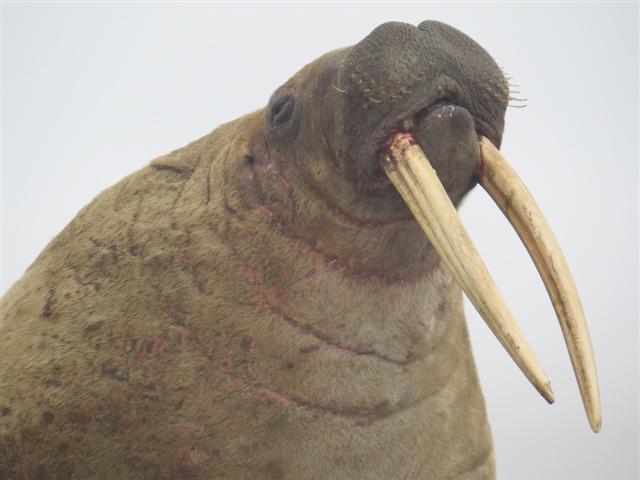
A WWF-led research team, a Canon photographer, and crew traveled to Siberia’s Arctic coast on the Laptev Sea, to help solve a scientific mystery. The Laptev Linkages expedition was sponsored by Canon.
I must say, we have really succeeded in our goal for the Laptev Canon-WWF Expedition: collecting DNA samples from walruses in this remote area. Now, we can work on settling a debate that’s over 50 years old – Where do the Laptev Sea walruses fit in the big story?
These big smelly creatures live in between the Atlantic and Pacific walrus populations, and they have access to open waters in the winter. So the walruses living in the Laptev Sea might be a separate subspecies. Genetic analyses from old bones refer these guys to the Pacific population, but there are some uncertainties.
Our main goal on this voyage was to collect DNA samples from the Laptev walruses for analysis. After days of crawling carefully up to walrus herds, culminating in a five-hour, all night sampling marathon, we reached the magic number: 32 small samples of walrus hide. The walrus DNA samples are now in safe in a lab in Moscow, ready for analysis. We hope to have an answer early next year, through the collaboration of walrus scientists in many different countries.
Some interesting observations from the trip:
- As a birder, I had an incredible trip, with more than 50 Arctic bird species. We found two breeding pairs of Sabine’s gull, and almost 20 species of waders.
- Walruses everywhere! We may have observed almost 25 percent of the entire Laptev Sea walrus population in one single day.
- Several interactions between polar bears and walruses, but nothing lethal. Most of the bears were in good shape despite being on land for relatively long time. Our guess is that in this specific area, the polar bears can handle being stranded without sea ice while they have walruses to feed on.